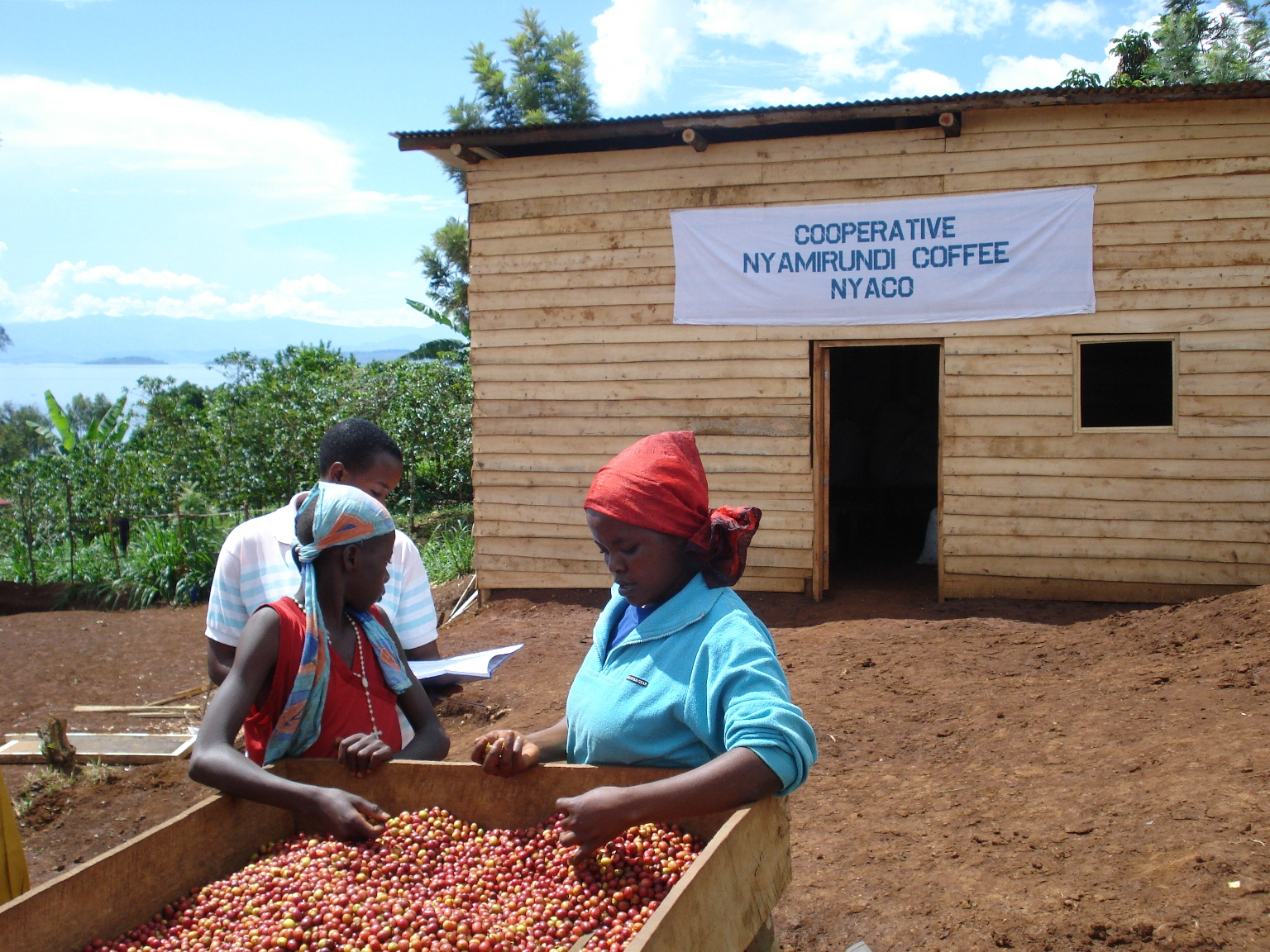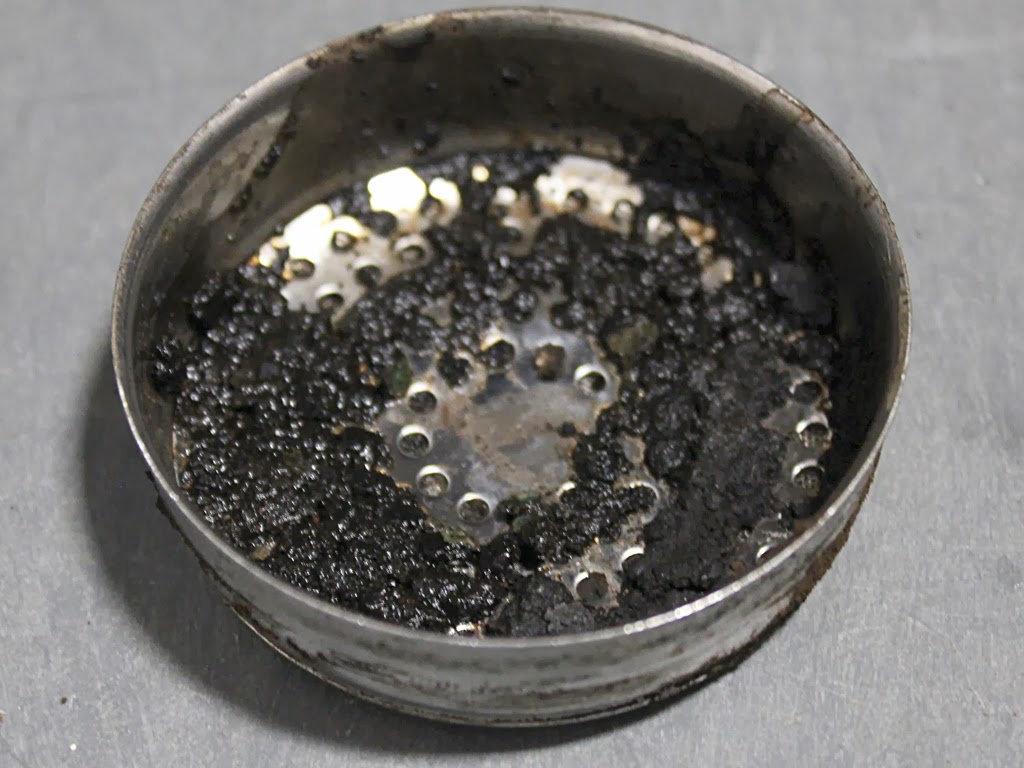October 2016 - Rwanda a remarkable Cinderella story. Cleaning your espresso machine
Date Posted:9 October 2016
Rwanda - a remarkable Cinderella story
Many of our mycuppa customers venture on the journey of single origin coffee discovery. Over time and with enough exposure to the various nuances of different coffee origins and varietals, people develop opinions on which coffees produce the most desirable characteristics of complexity and intensity best suited to their preferences.
It should come as no surprise that coffees from many of the African countries remain a key focal point for both coffee roasting companies and coffee drinking enthusiasts. One thing is for sure, demand for quality African coffees has always been high and looks certain to continue at insatiable levels. With African coffees it seems to always be a case of demand outstripping supply - we just can't seem to get enough !
Whether it's the powerful, crisp and clean flavours of a Kenyan, the fruity complexity of an Ethiopian or the sublime zesty acidity of a Tanzanian, it's no secret that African coffees can punch well above their weight in most of attributes we generally associate with a fine cup.
Not every horse is a winner though and it's important to note that a default decision to buy an African coffee will not guarantee to blow your socks off. Like all coffee growing origins, there exists a share of mediocre lots and even the best lots could be ruined with bad roasting or poorly prepared beverages.
Commercially, some African origins - particularly prime lots from Kenya and Ethiopia - have kept rising in price driven by excessive demand to the point of reaching a borderline risk for selling these expensive lots into a competitive retail market. Consumers are sensitive to price changes and while we all want to be coffee superheros, sourcing quality from the cult-status superstars of Kenya and Ethiopia place up to a 30% premium on the price of retail coffee - which may not leave a pleasant aftertaste.
So what can you do if some coffee origins are pricing themselves out of the market ?
One of the most challenging aspect of a coffee roasting operation is sourcing the raw ingredients. With so many lots on offer, it's a time consuming task to sort through lists and samples when attributes and characteristics may all appear on paper as quite similar, yet vary considerably during cup evaluation.
For more than 5 years we have invested higher levels of resources in the less famous African Group of 3 - Tanzania, Rwanda and Burundi (TRB). These origins have provided us with exceptional success in offering key points of difference to a crowded Australian retail coffee market. Our strategy with TRB has been simple - source a superior cup for a better valued price point.
Over the last few months builders have been fitting out the internals of the warehouse next door to us. Recently, the owners moved in and as a welcome gesture I made coffees, etc. Some of the staff were avid coffee lovers and accustomed to drinking takeaways from the local food business in the industrial estate (well, you can probably guess what that coffee is like). To say they fell off their chairs would be an understatement. "What is this ?"......"It's amazing !"......"I can't believe it"......."My goodness, it's incredible"........"Never tasted anything like it before".......and on it went........ never seem to tire from seeing this reaction, it's priceless.
In explaining the coffee they were drinking, I pulled back from my normal technical lecture and just shrugged my shoulders and said it was from Africa. The coffee was our Rwanda Inzovu - a country with an incredible story of recovery and success.

Mention the word Rwanda and the average person thinks of the terrible tragedy from the mid 1990's when more than 750,000 people died in the genocide between Waring Hutus and Tutsis.
Coffee in Rwanda commenced under Belgian Empire rule in the 1930's as coffee trees were planted to create a sustainable agricultural economy for Rwanda. Unfortunately, like many coffee origins in the past, Rwanda adopted a similar "mass volume" strategy that created a well-known chronic trap of producing coffee at lower quality that fetched subsequent low prices. The sheer volume of coffee being produced and the lack of financial capital meant the Rwandan coffee industry could not afford appropriate levels of infrastructure required to process the raw coffee into a quality standard acceptable to the broader global market.
Prior to the genocide, Rwandan coffees were sold at ridiculously low prices as excessive supply exceeded demand. It was common for crops to be destroyed as nobody wanted the coffee - being low quality from poor farmers lacking essential financial means to grow and process correctly. Prices paid were trending lower and lower in desperate attempts to move inventory - a terrible spiral.
Just 15 years ago, the Rwandan coffee industry was on the brink of complete collapse. Some tough decisions were made by the country's leaders to adjust trade barriers and restrictions. The coffee industry in Rwanda essentially hit the RESET button and started an entirely different strategy of focusing upon quality (specialty grade) and in the space of 14 years the average price per kilo paid for quality coffee crops increased an incredible 1700%.

The higher prices being paid for the extra care and attention required to produce quality lots enabled farmers to invest back into further improving their infrastructure and also provided financial benefits to the farming communities largely structured around Co-Ops. Farmers could now afford to send their children to school and the coffee industry became an important contributor to the overall Rwandan economy.
Today, Rwanda produces some of the world's best coffees and the global coffee industry has taken notice. It participates in the prestigious Cup of Excellence program and we now see Rwanda held in similar regard to Kenya, Tanzania and Ethiopians coffees.
.jpg)
Back in May 2014, we featured the superb Rwanda Inzovu in our monthly newsletter and it remains a core ongoing coffee in our portfolio.
We have been buying lots from Rwanda for almost 4 years and with each new crop we have seen consistently improving qualities.
Many of our mycuppa customers have worked out this bean is something really quite special as we see repeated purchases of Rwanda regularly meeting the needs and expectations of our customers.
Just like our spectacular PNG Highlands lot, the Rwanda Inzovu delivers attributes that everyday coffee drinkers desire - ultra smooth, rich, creamy with a long toffee finish and as a milk-based espresso there is an almost perfect symmetry.
This is about as reliable and accommodating as you can get with a coffee - never failing to please coffee enthusiasts.
- Acidity: Tart green apple
- Body: Black tea-like, full and thick
- Aroma: Caramel, lime, floral
- Flavour: Lemon, plum, candied grape-like sweetness with a long chocolate finish in milk.
Grab it here - Rwanda

Cleaning your espresso machine
OK, so the picture has just put you off drinking coffee !.
Espresso equipment makes a mess, a serious mess, even when you are careful.
For some people, it's this mess, invested time, skills and a lack of consistency that drive people away from espresso to the convenience of portion control appliances such as pods and capsules. The irony is that most ultimately return at some point in the future as the lure of a rich, full-flavored coffee from espresso, the intense aroma of freshly ground beans becomes undeniable.
I often hear or read stories about the cleaning regimes owners of espresso equipment undertake - ranging from "I didn't realize you need to do that" to the extreme, almost OCD-like fanatics that perform an entire chemical back-flush and grinder strip-down on a weekly basis.
The manufacturers of equipment generally offer a cleaning guideline in the owner's manual. Sometimes, these instructions are minimalist or cryptic in nature.
I've found there are 2 primary cleaning routines relating to espresso machine ownership that are largely misunderstood - back flushing and descaling. At times, it can be confusing due to a pervasive list of contradicting or conflicting information published on the internet from well-meaning enthusiasts.
Back flushing Espresso machines
Coffee is an oil and it stains. It also sticks like glue and goes rancid very quickly just like any other type of food oil (or fat) when exposed to oxygen.
It's the accumulation of the remnants of espresso coffee around the portafilter and group head that can lead to a degrading taint in the flavor of the beverage over time. The remnants are bitter, very bitter.
There are a few ways to keep this build up under control
- you can flush water before and after each shot (highly recommended to remove fines from the shower screen that are sucked up via capillary effect)
- ensure your portafilter is clean when loaded into the group head, e.g. wipe away any excess grounds from filling the portafilter with coffee, particularly on the lugs and rim.
- using a brush or cloth to wipe excess coffee from around the group seal, shower screen and group rails (section the portafilter lugs lock into) periodically.
- performing backflushing with a blind filter - using either chemical powder or none.
- removing the group seal and shower screen and clean manually.
The biggest misconception with backflushing espresso machines is the frequency of a chemical clean, e.g. how often should I do this ?.
Chemical cleaning involves the use of a powder which is basically a detergent, much like the stuff that goes into your dishwasher and it's purpose is to dissolve coffee oils - breaking it down so it's easier to remove.
Backflushing detergent is not to be used to descale your coffee machine as there are other products specifically designed for that purpose. You may be surprised to hear that often customers call us to say they have used backflushing detergent to descale their coffee machine.....oh dear !.
Chemical back flushing espresso machines is an essential part of owning the equipment as relying upon the use of water alone will not adequately do the job over a period of time. Used coffee oils are stubborn and stick to everything and combined with heat and pressure means it only gets worse over time.
It's important to note that many of the lower-end domestic espresso machines, some that may use pressurized baskets or don't have a 3-way over-pressure valve are not suitable for the backflushing technique of cleaning. There is a real risk of damaging equipment from excessive pressure if you attempt to use a blind filter on espresso machine that are not designed for this type of cleaning. Worse, you can injure yourself when removing the portafilter under the abnormally high pressure during the backflush routine.
Please consult your equipment manufacturer or owners manual as cleaning products do not stipulate which machines are suitable for backflushing and we are not able to advise if your machine is suitable for use with a blind filter.
The timing for when to perform a chemical backflush is linked to usage and whether you undertake other daily cleaning tasks such as flushing or non-chemical backflushes after use that can assist in keeping your machine cleaner where it matters most.
The important point to keep in mind here is that after chemical blackflushing, you need to ensure plenty of water is flushed through the system and to re-season your machine with at least 2 or 3 coffees that are thrown into the sink before making a beverage that is to be consumed.
Removing all traces of the chemicals is critical - it's for this reason I typically recommend that chemical cleaning should only be done every 8-10 kilos, etc.
In a cafe situation, the volume of coffee being used is distinctly different to the home environment. Some cafes chemically clean once a week, others every day.......it depends upon the quantity and prevailing operating standards of the cafe.

If you are going to the trouble of chemical cleaning, it's also important to also pay attention to your portafilter, the filter basket should be removed and soak in a solution of espresso backflush powder and hot water for at least 15 minutes, or soak the entire portafilter head as a unit. I also suggest trying to remove your shower screen and cup seals (group gasket), but care should be taken to ensure you don't damage the cup seals/group gaskets if you have no spares on hand. Again, thoroughly flushing with water is important to remove chemical residues.
Another point to note is that shower screens wear down and sometimes small particles will get trapped in the screen mesh that are difficult to remove. Shower screens are relatively cheap and I suggest replacing these every couple of years rather than trying to clean. Hold the screen up to the light to check how many holes are blocked as this blocking may exacerbate espresso shot channeling.
Espresso machine boiler descaling
Perhaps one of the most controversial aspects of cleaning and maintenance activities is the published advice on descaling.
The quality and type of the water being used in your espresso machine is the governing factor and you should take the approach of prevention is better than cure, e.g. pre-filter your water to prevent the risks of lime and scale buildup instead of using chemicals to clean more regularly.
Another benefit of caring about the water used in your espresso machine is that it can actually improve the flavor of the beverages produced by the equipment.
Areas such as WA, SA and some regional towns have tap water that is not entirely suitable for espresso machines - sometimes it can be the hardness or solids that cause issues such as higher levels of lime and scale buildup, or greater particle counts that cause sludge to built up in the boiler, thermoblock, pipework or heat exchangers. If you also have a kettle at home and can peer into it's internals, take a look at how clean it is.........this will give you an idea as to what your coffee machine is like.
The use of unfiltered water will reduce the lifespan of your machine. Some of the components in espresso machines are very small diameter (less than 1mm) and these can clog and fail from accumulated particles and sludge that is dislodged during operation or cleaning.
If you live in an area that has less than ideal water, the best advice is to visit a local water treatment shop and work with them to determine the appropriate local solution. Quite a few people try the DIY path by ordering test kits and implementing elaborate systems, but sometimes these are not suited to the local conditions. In some cases reverse osmosis is not an ideal treatment for espresso machine water as it strips essential minerals from the fluids.
In terms of when to descale a machine I tend to err on the conservative side if your machine does not have an automatic descaling program built-in, or if you have a high-end copper boiler type espresso machine.
Automatic machines with built-in descale programs and programs run regularly to keep the machine operating successfully. These tend to be found in machines that use alloy thermoblocks that are more susceptible to reactions with water or even adverse water conditions and the programs are generally less aggressive with the cleaning cycles and less likely to dislodge particles if run regularly.
For traditional espresso machines with copper boilers, heat exchangers, etc. I have serious concerns about descaling as I've found over the last 10 years that descaling can cause further problems - buildup dislodges and makes it's way from the bottom of the boiler to the small diameter pipes, fittings and components such as jets causing blockages and failures a matter or days, weeks or months after heavy or aggressive descaling.
There are 3 basic types of products that people use for descaling - tablets or powder that is mixed into a solution to gently clean, citric acid (which I don't recommend) and professional espresso machine liquid descaling solution.
Another reason I don't recommend DIY descaling of high-end espresso machines is due to the likelihood you are unable to remove all of the descaling concentrate from the boiler and the heat exchangers if the descaling is down in-situ. There are hard to reach crevices inside of heat exchangers and boilers that will never flush out and the descaling solution just sits significantly tainting your coffee and water from the machine and could even result in adverse health affects if ingested.
Descaling boilers is best undertaken by the full removal of the components and even better it should be done by a professional.
There is a very easy test I perform on a coffee machine .......simply run some water from the group head without the portafilter loaded. Smell it......does it smell drinkable ? You can also repeat this process on the hot-water dispenser from the machine. If there is an unpleasant odour and your machine has been used regularly over the years without a descale, then it could be a sign there is a buildup in your boiler.



